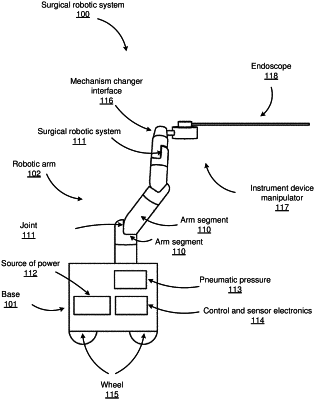| CPC A61B 34/30 (2016.02) [A61B 34/20 (2016.02); A61B 2034/107 (2016.02); A61B 2034/2051 (2016.02); A61B 2034/301 (2016.02)] | 30 Claims |

|
1. A medical robotic system, comprising:
an instrument configured to be driven through a luminal network; and
a control circuit having stored thereon a model of a mapped portion of the luminal network of a patient, a position of a target with respect to the model, and a path along at least a portion of the model from an access point to the target, the control circuit further having stored thereon computer-executable instructions to cause them to:
determine that the path leaves the mapped portion of the luminal network before reaching the target,
determine a current location of the instrument based on a weight given to at least a first modality, the first modality derives a location based on location data received from a set of one or more location sensors and the mapped portion of the model, the instrument is configured to be driven through the luminal network,
determine, based on the current location, that a distal end of the instrument is within a threshold range of a point at which the path leaves the mapped portion of the luminal network,
in response to determining that the distal end of the instrument is within the threshold range of the point at which the path leaves the mapped portion of the luminal network, update the current location of the instrument based on a reduction of the weight given to the first modality, and
command a robotic arm to move the instrument within the luminal network based on an updated location of the instrument.
|